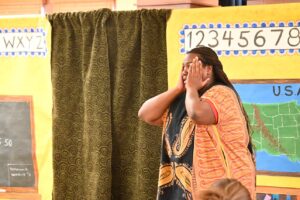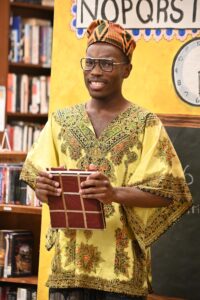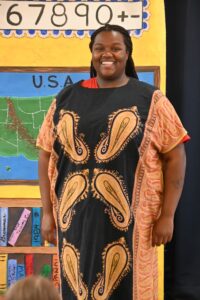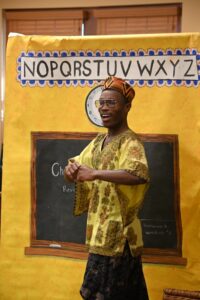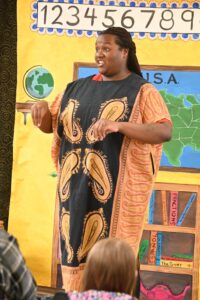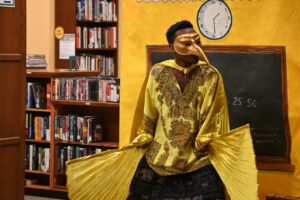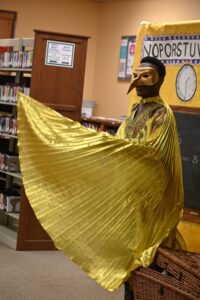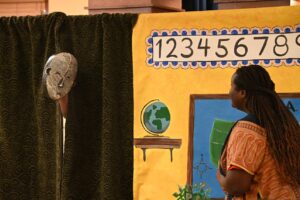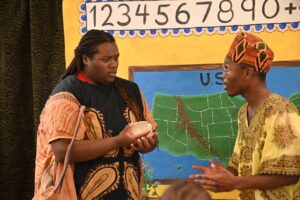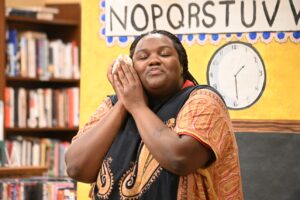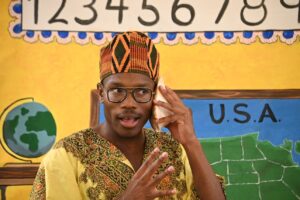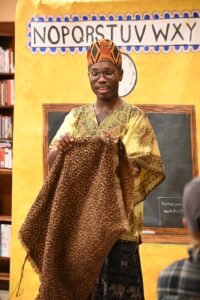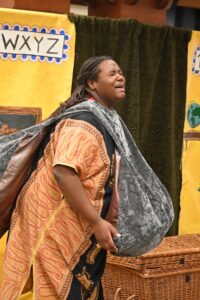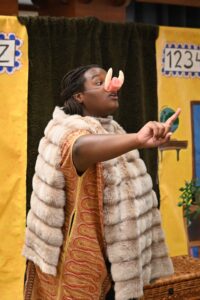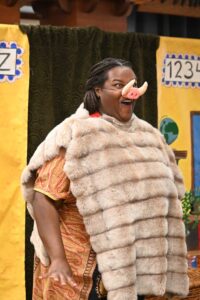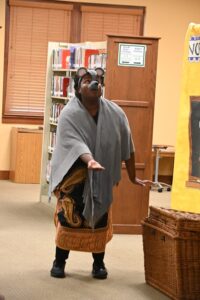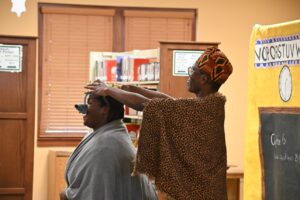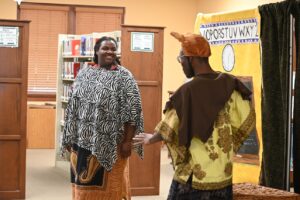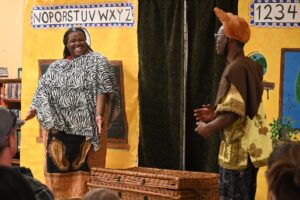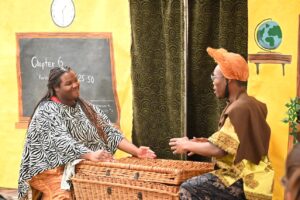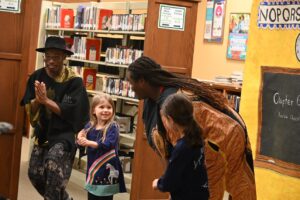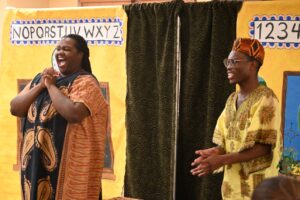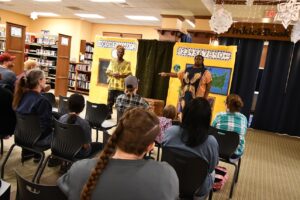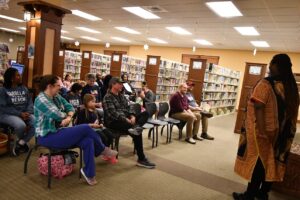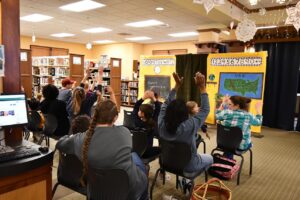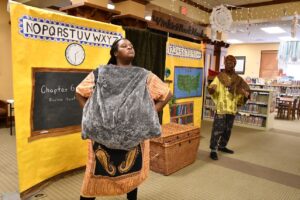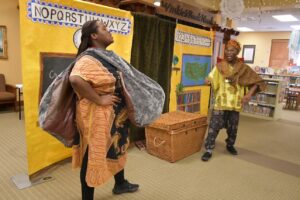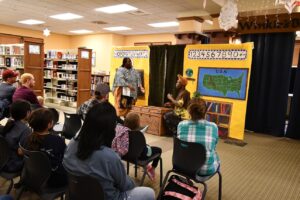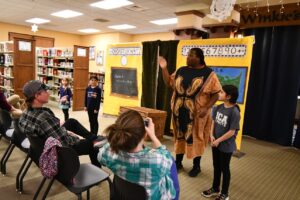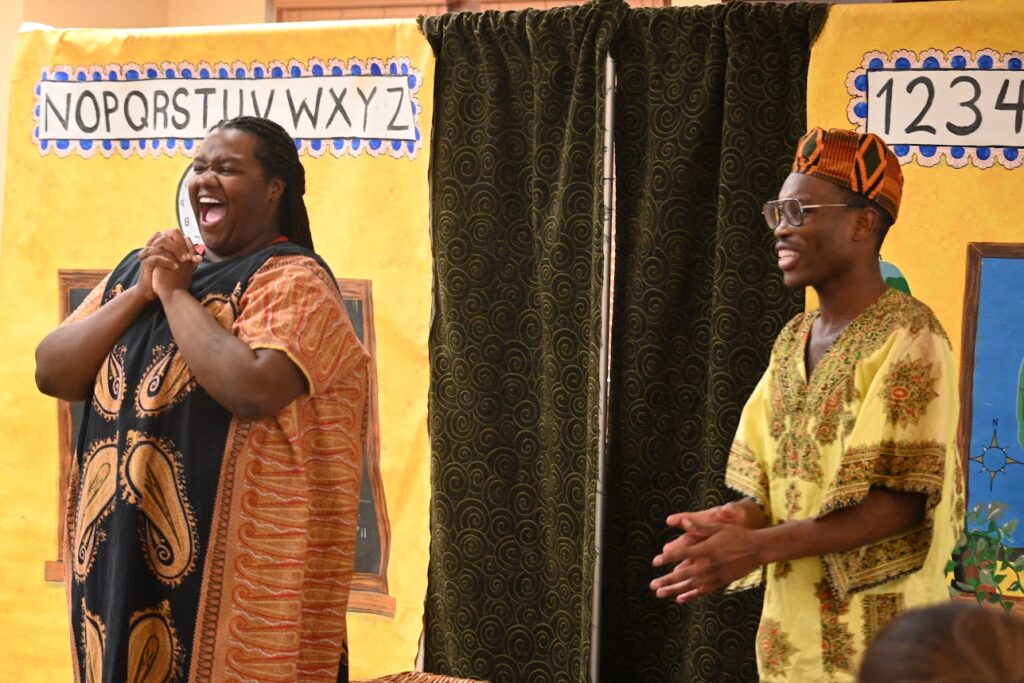
BY DEBBIE PAGE
The Iredell County Public Library system presented the Bright Star Theatre production of “African Folktales” at all of its branches as part of its celebration of Black History Month.
The two actors portrayed presented folktales from the desert lands of the Sahara to the plains of the Serengeti to Mount Kilimanjaro and beyond, portraying a variety of characters from a wide range of cultures in stories that celebrate various African folk tale traditions.
Music and movement are big parts of traditional African storytelling. Storytellers Akili and Jabari used drums, their voices, and parts of their bodies to make music. With minimal costuming, the actors changed the way they moved across the set to portray animals at times.
Akili and Jabari shared folktales gathered from across the African continent, including Ghana, Liberia, and Nigeria in West Africa, Kenya in East Africa, and Zimbabwe in South Africa. Their stories come from a variety of different people and tribes.
They explained that African folktales were passed down orally through generations, told verbally instead of written down on paper to read.
The attendees were asked to join in the performance by making sound effects, singing parts of songs, waving their arms, calling out certain words, and helping act out the stories.
Many African folktales use animals who act like humans in order to teach a lesson. Other tales explain why an animal looks or acts the way it does or how that animal came to have a specific character trait. These stories are called “pourqoui” tales, from the French word for “why.”
A common character in African folktales is the trickster, an animal who is smaller in size than the others and who uses his wits to outsmart others. Sometimes the trickster is very funny, and sometimes he or she is not likable at all.
Anansi the Spider is probably the most famous of the African tricksters. The show included a funny story about Anansi that explains how he got his long, skinny legs and taught a lesson about the consequences of being greedy. Another explained how the giraffe got its long neck and the elephant its long trunk.
An additional story was about Manzanzaba and Zenzele, who sought to find and tell stories for entertainment and understanding. They found a conch shell that told stories if they held it to their ears.
The actors also portrayed a folk tale in which King Leopard has a spear-throwing contest with all the animals to determine who should succeed him. Large and powerful animals like the elephant and boar compete, but the lowly mouse succeeds in winning through its intelligence.
Those at the J. Hoyt Hales Memorial Troutman Library performance also learned a little about theatre and acting as the actors took questions from attendees after the formal presentation.
FOR FURTHER READING
Nelson Mandela’s “Favorite African Folktales” features 32 different stories from across the African continent to represent a range of cultures and genres by various authors.

